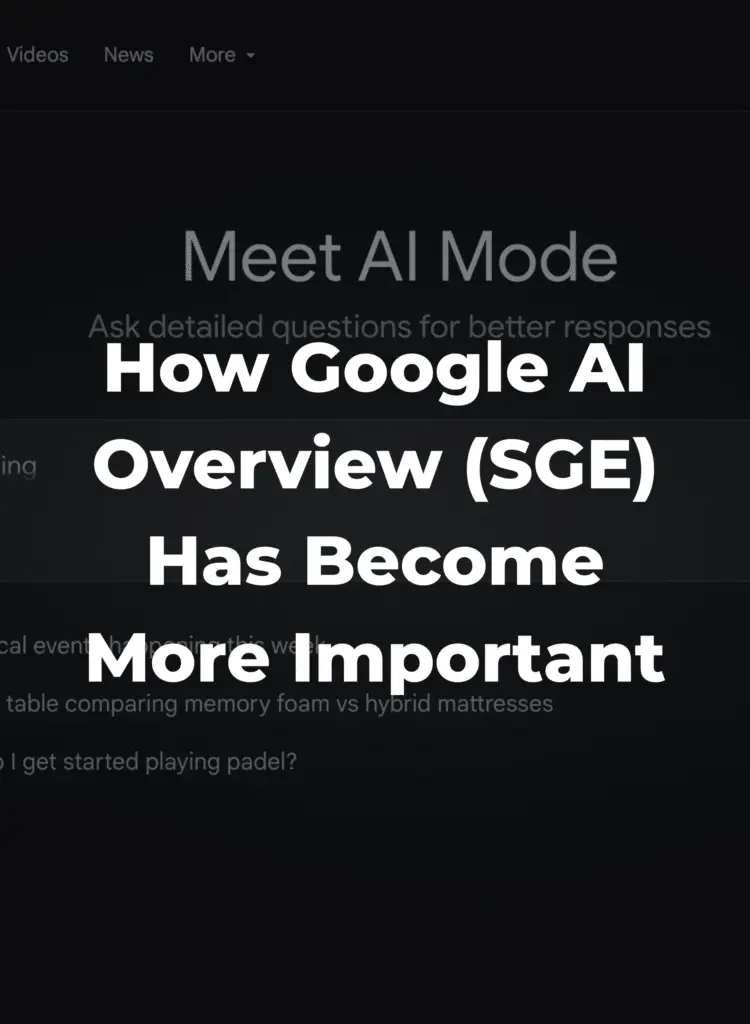A new digital era is dawning, and for Malaysian small and medium enterprise (SME) owners, it presents both a challenge and a monumental opportunity. The familiar landscape of online consumer behavior is undergoing a rapid transformation, driven by the increasing adoption of artificial intelligence. Traditional marketing strategies, which have long relied on attracting attention and driving clicks, may no longer be sufficient in an environment where consumers receive direct, conversational answers from machines. A recent study reveals that 85% of Malaysian consumers now fluidly switch between online and offline channels during their purchase journeys. More significantly, an astounding 58% of Malaysian shoppers are already using AI to inform their buying decisions, a rate that far surpasses the global average.
This shift creates a critical juncture for businesses. While search engine optimization (SEO) has historically focused on achieving high rankings on a list of blue links, a new paradigm is emerging. Consumers are increasingly interacting with AI-generated responses that appear at the very top of search results, often eliminating the need for a click. For a country where Google holds a dominant 93.04% of the search engine market share, the evolution of Google’s Search Generative Experience (SGE) represents a profound and immediate change. The question is no longer whether to prepare for this future, but how to adapt to a present where a significant portion of the audience is already engaging with AI-powered answers. The traditional “wait-and-see” approach is no longer viable; the data indicates that Malaysian SMEs must act now to remain competitive and capture the attention of this new generation of savvy, demanding customers.
This strategic evolution is what is being termed “Generative Engine Optimisation” (GEO). Rather than a complete abandonment of traditional SEO, it is a strategic refinement that focuses on becoming the trusted source of truth in an AI-driven world. This report will demystify Generative Engine Optimisation, providing a clear and actionable blueprint for Malaysian SMEs to not only navigate this new environment but to thrive by leveraging their greatest asset: their authentic experience, expertise, and trustworthiness.
The New Search Reality: SEO vs. GEO (and the Rise of the Answer Engine)
The foundational principle of search has fundamentally shifted. For decades, SEO was a discipline centered on the Search Engine Results Page (SERP). The goal was to match a user’s typed keywords with a relevant webpage, with success measured by the website’s position in the ranked list. This approach relied heavily on factors like backlink profiles and keyword density to signal authority and relevance to search algorithms. However, this model is giving way to a new one, where search engines are increasingly acting as “answer engines”. These AI-driven systems are designed to provide sophisticated, human-like responses to complex, conversational queries. They are not merely matching keywords but are synthesizing information from multiple sources to provide a single, coherent, and direct answer, often displayed in a prominent “AI Overview” at the top of the results page.
This development, characterized by “zero-click” interactions, poses a significant challenge to the conventional SEO model. The immediate concern for many businesses is the potential for a substantial decrease in organic visibility and traffic, with some studies estimating a drop of 20% to 60% for certain industries. If a user’s question is answered directly on the search results page, the need to click through to a website diminishes. However, this apparent threat is a re-calibration of what constitutes a successful SEO strategy. The aim is no longer just to get a click, but to be the authoritative source from which the AI draws its information.
While AI Overviews may reduce direct organic clicks for simple queries, they offer a powerful opportunity for brand building. By being the cited source in an AI-generated answer, a business gains unparalleled visibility and brand authority. This positions the company not just as another listing, but as the trusted expert on a given topic. This focus on long-term brand equity and trust is arguably more valuable than a single click, as it can lead to more qualified traffic and deeper audience engagement through follow-up questions and conversational threads within the AI search experience.
The distinctions between the two disciplines can be summarized in the table below.

The 5-Pillar Blueprint: Your Action Plan for Malaysian SME Success
For Malaysian SMEs facing challenges such as technological illiteracy, limited resources, and intense competition, adopting a new strategy can seem daunting. This five-pillar blueprint is designed to be a pragmatic and resource-efficient framework that plays to the inherent strengths of SMEs: their local knowledge, hands-on experience, and direct connection with customers.
Pillar 1: Become the Authority (Mastering E-E-A-T)
At the heart of Generative Engine Optimisation is a set of principles known as E-E-A-T: Experience, Expertise, Authority, and Trustworthiness. Unlike traditional SEO, which could sometimes be manipulated with technical tricks, GEO places a significant emphasis on the quality of the content itself. AI models are trained to prioritize content that demonstrates these four tenets. This is where SMEs have a distinct advantage. Their daily operations and direct customer interactions are a wellspring of unique, first-hand experience and expertise that cannot be replicated by generic AI-generated text.
To implement this, businesses should:
Showcase First-Hand Experience: Tell stories that highlight your practical knowledge. This could involve creating mini-case studies from customer testimonials or sharing first-hand accounts of problem-solving.
Highlight Expertise: Use author bylines that include the qualifications and professional background of the writer. Linking to a staff member’s LinkedIn profile or professional credentials helps to build credibility.
Build Authority with Citations: Incorporate data from reputable sources and include citations to back up claims. One study found that authoritative adjustments to content improved rankings by 89% and trust adjustments improved them by 134% in a generative search engine experiment.
Focus on Trustworthiness: For sensitive topics, often categorized as “Your Money, Your Life” (YMYL) content, trust is paramount. Transparency about a product, service, or opinion, backed by real data, is crucial.
Pillar 2: Write for Answers, Not Just Rankings
Generative AI thrives on natural language and conversational queries. The content strategy must therefore pivot from targeting isolated keywords to addressing the full spectrum of user intent. Instead of writing a page for a single, broad keyword, the focus should be on creating a comprehensive resource that directly answers the questions a user might ask.
Practical steps for this approach include:
Embrace Conversational Language: Use language that mimics the way people speak and ask questions. For example, instead of a title like “CRM Software Features,” a GEO-optimized title might be “How to Choose the Best CRM Software for Your Malaysian Small Business.”
Target Intent-Based Questions: Use tools like Google’s “People Also Ask” (PAA) section or Google Search Console to identify the most common questions your audience is asking. A content library can be built entirely by creating in-depth resources that answer these questions.
Lead with the Answer: Structure your content to provide a direct and concise answer to the primary query in the very first paragraph, followed by a more detailed explanation. This makes it easier for the AI to “pull” the core information.
Build Topical Authority: Instead of creating a separate page for every minor keyword variation, focus on covering a topic in its entirety on a single, comprehensive page. This establishes your website as a definitive resource on a subject, which is highly valued by AI models.
Pillar 3: Structure Your Content for AI Readability
AI search engines are akin to “speed readers,” scanning content for structural clues to quickly understand its hierarchy and purpose. The way content is formatted is therefore just as important as the words themselves. A clean, logical structure makes it easier for AI crawlers to parse information and increases the likelihood that your content will be featured in a prominent answer box or AI Overview.
Key structural elements to prioritize include:
Descriptive Headings: Use a clear heading hierarchy with a single
<h1>tag for the main topic and logical<h2>and<h3>tags for subsections. Headings should be direct and keyword-rich rather than vague or clever, serving as signposts for both AI and human readers.Content “Chunking”: Break down information into small, digestible chunks using short paragraphs, bullet points, and numbered lists. These formats are easily parsed by AI and can be directly pulled into answer summaries.
Schema Markup: Implement structured data, a form of code that directly communicates with search engines and AI. For SMEs, schemas like
FAQPage,HowTo, andLocalBusinessare particularly valuable, as they provide explicit context that helps AI understand the content without inference.Plain HTML: Ensure that all critical text and keywords are in the initial HTML source of the page, rather than hidden inside interactive elements that require user clicks or heavy JavaScript to load.
Pillar 4: Embrace Multimedia & Human Connection
Google’s AI Overviews are built on multi-modal models that can process images and videos in addition to text. This presents a significant opportunity to differentiate content. Custom visuals, diagrams, and videos can provide context and support that generic stock images cannot.
To optimize your multimedia:
Use Unique Visuals: Embed custom-made visuals such as infographics, charts, and product explainer videos that support the textual content.
Provide Descriptive Alt Text: All images and videos should have descriptive alt text and filenames, which helps AI understand what the media represents.
Transcribe Videos: Transcribing video content creates valuable text-based content that can be indexed by search engines and AI, catering to both visual and text-based information processing.
Add Human Elements: While AI is powerful, it lacks authentic human experience. Incorporating personal stories, humor, and a genuine voice makes content more relatable and trustworthy, which helps it stand out from purely generative content.
Pillar 5: Don’t Abandon Traditional SEO (Just Evolve It)
Generative Engine Optimisation is not a replacement for traditional SEO but a strategic evolution. The foundational elements that make a website successful for users also make it more accessible and trustworthy for AI. Ignoring the basics will prevent a site from ever being considered as a source for an AI answer.
Key traditional SEO practices that remain critical include:
Technical SEO: A fast-loading, mobile-friendly website is essential for a positive user experience and for AI crawlers.
Local SEO: For SMEs with a physical presence, optimizing for Google Maps and local search remains a critical strategy. Local searches often result in a visit to a physical location, and appearing in Google’s local pack can significantly boost visibility and clicks.
Link Building: Acquiring third-party mentions and backlinks from authoritative, industry-relevant sites continues to be a key signal of authority and trust for both search algorithms and AI.
Strategic Prioritization: A practical approach is to focus on optimizing existing URLs that already rank on page one or two of search results, as these have a higher probability of being featured in AI Overviews.
Your Future-Proof Strategy Starts Now
The digital landscape in Malaysia is changing rapidly, driven by AI and a new generation of consumers. Generative Engine Optimisation is not a futuristic concept; it is the present-day strategic imperative for any Malaysian business that seeks to remain competitive. It represents a fundamental shift in mindset: from simply aiming to “show up” in search results to proactively positioning your business to “be the answer.” The goal is not just to attract a click but to build the kind of deep brand authority and trustworthiness that will make your business the definitive, cited source in an increasingly conversational search environment.
This foundational understanding is the first step. To move from theory to action, a pragmatic, hands-on toolkit is required. The accompanying eBook, “The Malaysian SME’s Guide to Generative Engine Optimisation,” provides a step-by-step blueprint for implementing these strategies, complete with checklists and practical guides designed to help your business transition smoothly and effectively into the age of AI.




